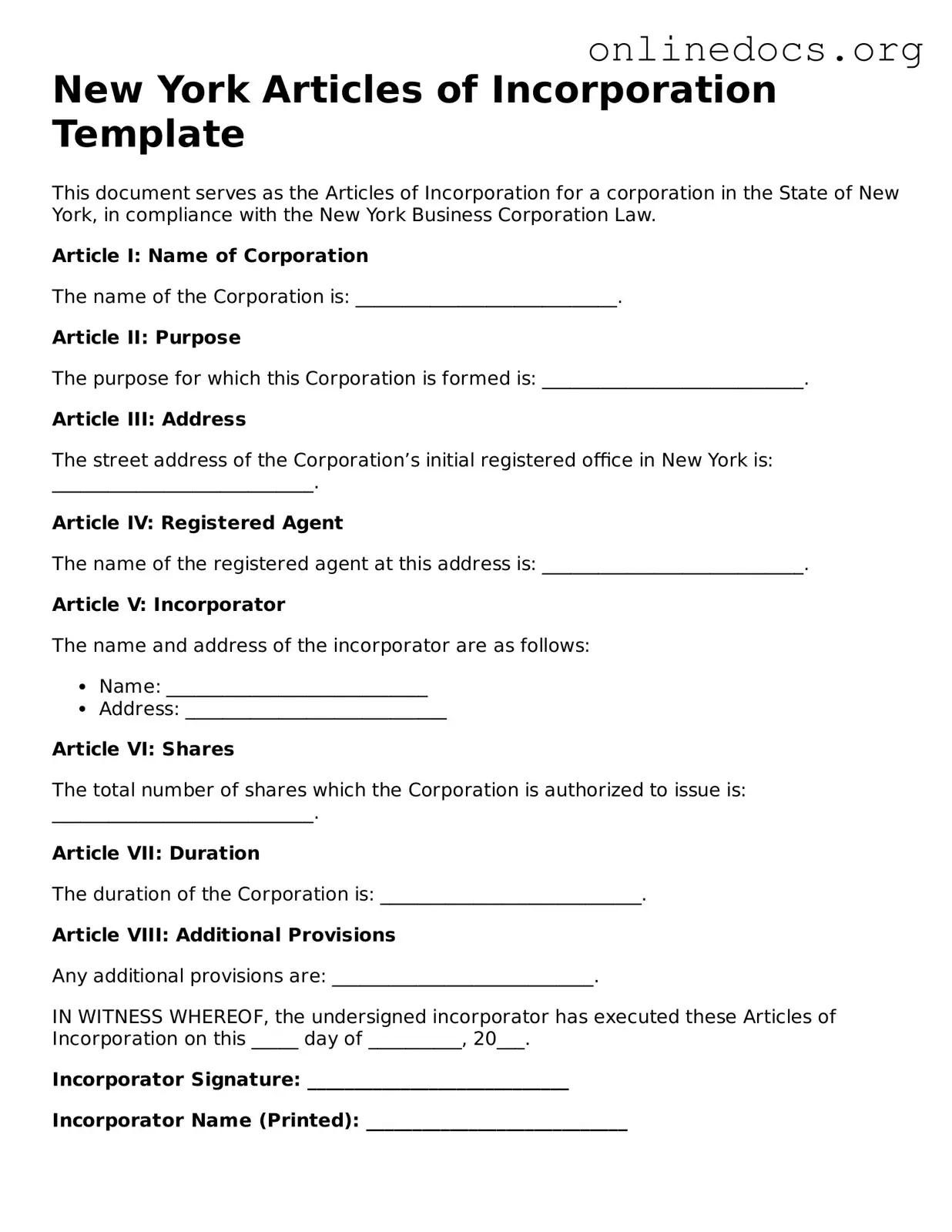The Articles of Incorporation form in New York is similar to the Certificate of Incorporation used in many states. Both documents serve the purpose of officially creating a corporation. They outline key details such as the corporation's name, purpose, and the number of shares it is authorized to issue. While the terminology may vary slightly from state to state, the fundamental purpose remains the same: to establish a legal entity recognized by the state.
The Limited Liability Company (LLC) Articles of Organization is another document that shares similarities with the Articles of Incorporation. Both documents are filed with the state to create a legal business entity. The Articles of Organization detail the LLC's name, address, and the designated registered agent. This document provides limited liability protection to its owners, much like the protections offered to shareholders in a corporation.
The Bylaws of a corporation are also comparable to the Articles of Incorporation. While the Articles of Incorporation establish the corporation's existence, the Bylaws govern its internal management. Bylaws outline the procedures for holding meetings, electing directors, and other operational rules. Both documents are essential for the formation and operation of a corporation, but they serve different functions.
Understanding the implications of various legal documents is crucial for anyone looking to establish a business successfully. In addition to the Articles of Incorporation, it's important to recognize the role of a Bill of Sale, particularly when transferring ownership of personal property. For an efficient process, you can utilize resources available at All Templates PDF, ensuring all relevant paperwork is properly managed.
The Partnership Agreement is another document that has similarities with the Articles of Incorporation. Both documents define the structure and rules of a business entity. A Partnership Agreement details the roles, responsibilities, and profit-sharing arrangements among partners. Like the Articles of Incorporation, it helps establish the framework for how the business will operate, although it does not create a separate legal entity like a corporation does.
The Operating Agreement for an LLC is akin to the Articles of Incorporation in that both documents outline the structure and governance of the business entity. The Operating Agreement specifies the management structure, member roles, and operational procedures for the LLC. While the Articles of Incorporation focus on the corporate framework, the Operating Agreement provides more detailed guidelines for day-to-day operations.
The Certificate of Good Standing is another document that can be compared to the Articles of Incorporation. This certificate verifies that a corporation is legally registered and compliant with state regulations. While the Articles of Incorporation initiate the formation of the corporation, the Certificate of Good Standing serves as proof of its ongoing compliance and legitimacy in the eyes of the state.
The Statement of Information is similar to the Articles of Incorporation in that it provides essential information about a corporation. This document typically includes the names and addresses of directors and officers, as well as the corporation's business address. While the Articles of Incorporation establish the corporation, the Statement of Information updates the state on its current status and management structure.
The Annual Report is also comparable to the Articles of Incorporation. Both documents are required by the state to maintain a corporation’s legal status. The Annual Report provides updated information about the corporation’s activities, financial status, and management. While the Articles of Incorporation are filed at the inception of the business, the Annual Report is filed periodically to ensure ongoing compliance with state regulations.
Finally, the Foreign Corporation Registration is similar to the Articles of Incorporation in that it allows a corporation to operate in a state other than where it was originally incorporated. This document provides necessary information about the corporation and ensures it is compliant with the laws of the new state. While the Articles of Incorporation establish the corporation in its home state, the Foreign Corporation Registration allows for expansion into other jurisdictions.
